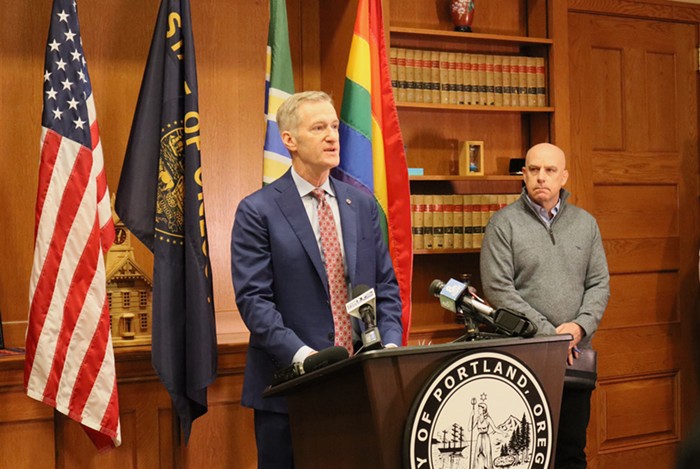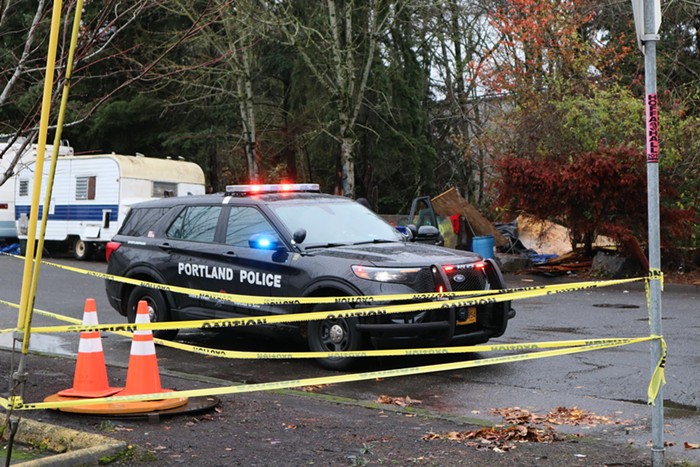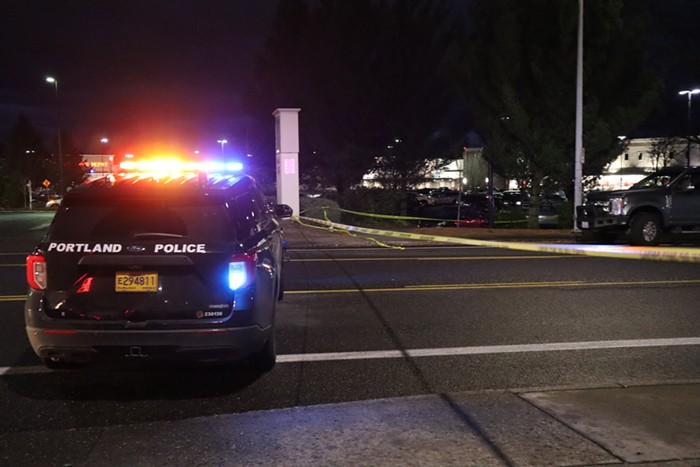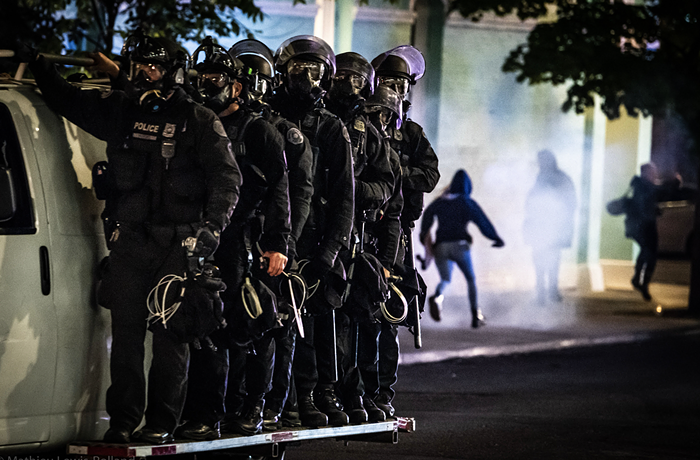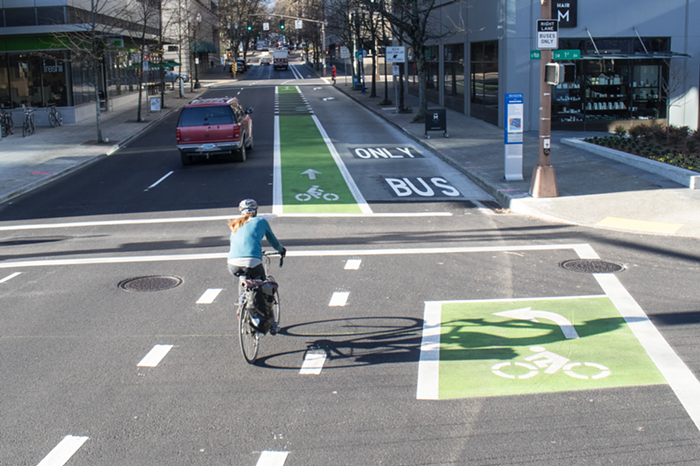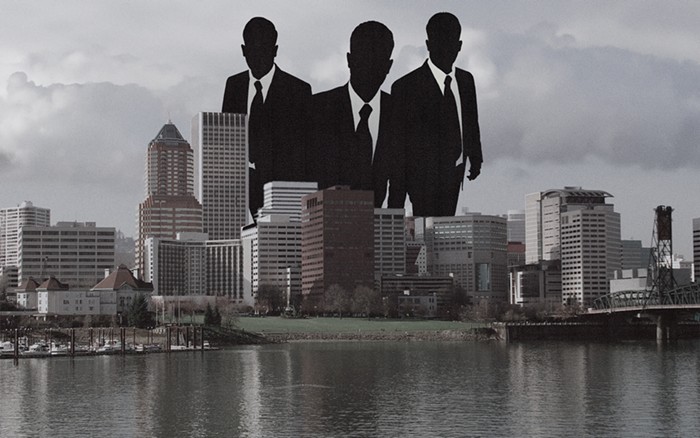The call flashed over to 911 about five minutes before 4 o'clock on what officers said was a "slow" Sunday afternoon. A homeless man had threatened a security guard at a strip mall at SE 82nd and Powell. He was a chronic trespasser, camping at a nearby abandoned carwash, and was known to carry a knife.
Just 11 minutes later, 67-year-old Thomas Higginbotham, a Vietman War vet with a long criminal record, was dead.
He had been shot by police 10 times, with one of the bullets piercing his aorta and both lungs. His thick clothes had repelled a Taser's probes, and he was striding toward a pair of officers in a small room while holding a large kitchen knife. When he finally fell, outside a small room in the trash-strewed carwash where Officers Jason Lile and Larry Wingfield had confronted him, his left hand was still on the knife's handle.
The January 2 shooting was the eighth by Portland police officers since January 2010, and it marked the end of a seven-week spurt that saw five shootings. A grand jury found no criminal wrongdoing in Higginbotham's shooting. But transcripts released this afternoon (some 210 pages of interviews with police officers and other witnesses) offer new details about what happened—and how yet another call that officers assumed would be routine quickly turned deadly.
"I mean this is the last guy I want to get into shooting with, you know," Wingfield testified. "I don't know, that was a big deal with me being that he was a military service guy and, you know, and being an elderly guy, too. There is nothing about this that I want any part of."
But Wingfield said he also had a regret: that he and Lile had gotten so close to Higginbotham in the first place. Normally police are trained to keep at least 21 to 30 feet away from someone with a blade. In the cramped confines of the abandoned Lucky Car Wash on 82nd, they were never any more than 13 feet away, and probably more like six to eight feet as Lile and Wingfield waited to use force, barking orders at Higginbotham to drop his knife.
Complicating matters? Higginbotham was drunk—his blood alcohol level at .26 percent. Lile's Taser couldn't find easy purchase. And detritus—remnants from other homeless campers having come and gone—littered the floor, blocking an easy retreat.
"And that—you know, that was, honestly, a mistake," says Wingfield. "If I look back on anything I would do differently, I wouldn't let him get this close. He was an older man. He was a veteran. You know, we just didn't want to shoot him. I put my partner at risk. I put myself at risk to try to save this guy."
The call came from a security guard working at the strip mall on the northwest corner of 82nd and Powell. Vicky Snider said that Higginbotham had tried to take as wing at her, and testified that he repeatedly threatened to hurt or kill her in the months before his shooting, all because she had 86'ed him from the premises.
He was a familiar face on the corner, known as someone with a drinking problem who could be sunny and nice one day but angry and sullen on others. That Sunday, hours before police showed up, he was at the Tik-Tok Lounge across 82nd with another homeless man who was bunking at the carwash, Robert Graves.
It was Graves, in fact, who let police in when they came knocking at the carwash, looking to take Higginbotham to jail on a trespassing charge. Graves was staying in the bay of the place, where cars normally would be running through a gantlet of cleaning machinery. Higginbotham was staying inside a small office.
As Graves testified, he took officers into a small room outside where Higginbotham was bunking and said he knocked on the metal, knobless door and told him that police were there to see him. Lile and Wingfield took over, identifying themselves as cops and saying through the closed door: "Not a big deal. We just want to talk to you. If you could come out and talk to us, that would be great."
But when Higginbotham didn't respond, they began to worry. And they asked Graves if Higginbotham had weapons. He said yes. Then they asked Higginbotham through the door. He finally spoke, matter-of-factly, and said he did. And that was when, witnesses testified to jurors, all hell broke loose.
According to Wingfield, that was when the officers hustled Graves out of the room and drew their weapons. Graves and Lile both said Graves asked to be excused and allowed to return to the carwash's bay. Soon after, while Lile was backing toward the door where they entered the room, so he could radio that a man with a weapon was holed up and refusing to cooperate, Higginbotham then opened the door to his room and walked out while holding a kitchen knife.
Graves said that although he couldn't see what was happening, the officers clearly and loudly told Higginbotham to drop the knife. Wingfield said Lile was doing all the shouting, and both Like and Wingfield said they were both frightened and surprised when they saw him emerge with a weapon.
They described Higginbotham alternately as emotionless and angry, even "like a shark"
"And this guy, he steps out, and the look on his face just made me kind of sink inside," Wingfield said. "I just thought, 'Aw, shit, you know, this guy is going to make us shoot him.' I just start getting mad, getting angry that he was going to make us do that. I somehow just knew from the look on his face he was going to do that."
Testified Lile: "That was the oh, you know—the 'oh, shit' moment. I just really—surprised me, scared me, didn't expect to see that. I mean, I was really frightened for what could possibly happen."
They began to back away while Lile hollered, but Wingfield found himself blocked by debris and couldn't get a clear path to the door into the rest of the carwash. He remembers hearing Lile take out and fire his Taser as Higginbotham closed in, to both officers' apparent relief, only to have that relief melt away once they realized Higginbotham's several layers of clothing on a cold, windy day had protected him from the Taser.
And, soon, as Lile put it: "We just had no other option."
They began emptying their handguns into Higginbotham's chest and belly at deadly close range, dropping him in a matter of seconds. Graves said he could hear the electricity arcing from the Taser and then the pops from the 9mm bullets. Higginbotham apparently spun back during the barrage and took three bullets in the back, testified Karen Gunson, the state's chief medical examiner.
That worried Wingfield.
"Probably ridiculous at that point to even worry about that. But the way we get criticized in the media for the stuff we do, it just struck me, you know."
Interestingly, the DA's office called two training officers to testify. One, Tracy Chamberlin, a lead patrol tactics trainer, explained why officers normally are instructed to keep a large radius around someone carrying a bladed weapon—so that they can pull out their guns in time to avoid getting seriously wounded. But she also said that someone puncturing that radius—from 21 to 30 feet—wasn't grounds on its own for using deadly force. She also explained that officers' armor only protects them from bullets and that having a vest that also protected against knives would be prohibitively heavy.
The bureau's lead Taser trainer, Thomas Forsyth, addressed why the Taser didn't penetrate and said (without elaboration) only that the bureau had previously looked into getting Tasers outfitted with longer probes but chose not not to do so.
But while Wingfield left the shooting with doubts, Lile testified he had none.
"It was reasonable for us to go in there and try to contact Tom," he said. "You know, there was no information that he had used a knife or brandished a knife or weapon to the security guard. It was just that he tried to hit her. ... A lot of people carry knives."
According to the O, Higginbotham will be buried Monday, almost a month after his death, in the Willamette National Cemetery.
